Abstract
In response to intraluminal challenge with crude cholera exotoxin, canine Thiry-Vella duodenal loops consistently produced isotonic fluid for a 24-36 hr period. Isotonic fluid production generally began within 15 min after challenge. Mean bicarbonate concentration of fluid produced by duodenal loops was 24±6 (SD) mEq/liter. Perfusion of exotoxin-treated duodenal loops with an isotonic electrolyte solution containing glucose 60 mOsm/liter caused a significant decrease in exotoxin-induced isotonic fluid output. The net effects of glucose on isotonic fluid absorption by perfused duodenal loops were not significantly different before and after administration of crude cholera exotoxin.
The response of canine duodenal loops to challenge by cholera exotoxin differs from responses of jejunal and ileal loops in a) absence of a detectable “lag period” between administration of exotoxin and initiation of net fluid output; b) a longer period of fluid production following exotoxin administration; and c) a significantly greater net fluid output per unit length of gut. The mean bicarbonate concentration of the fluid produced by duodenum is less than that produced by ileum, but is not significantly different from that produced by jejunum. The duodenal response is similar to that of the more distal small bowel segments in that an effect on isotonic fluid movement is observed shortly after exotoxin administration and the maximum rate of exotoxin-induced isotonic fluid production is not reached until 4-5 hr after exotoxin administration. The basis for the consistent delay of 4-5 hr between intraluminal exotoxin administration and maximum gut fluid production has not yet been determined.
Current data are consistent with the hypothesis that the rate of secretion of isotonic fluid induced by cholera exotoxin is not significantly different per unit length, in duodenum and ileum and that the lesser net fluid output in the ileum is due to the greater capacity for isotonic fluid absorption by the more distal small bowel segment.
Full text
PDF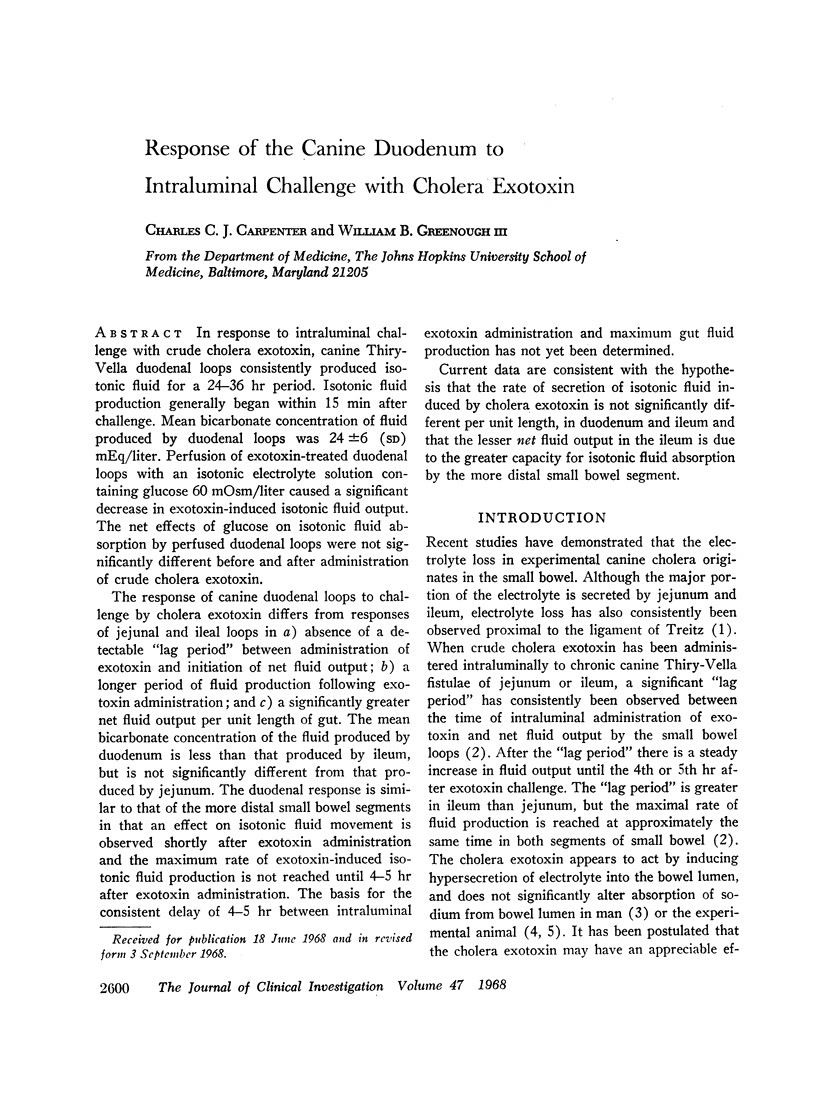
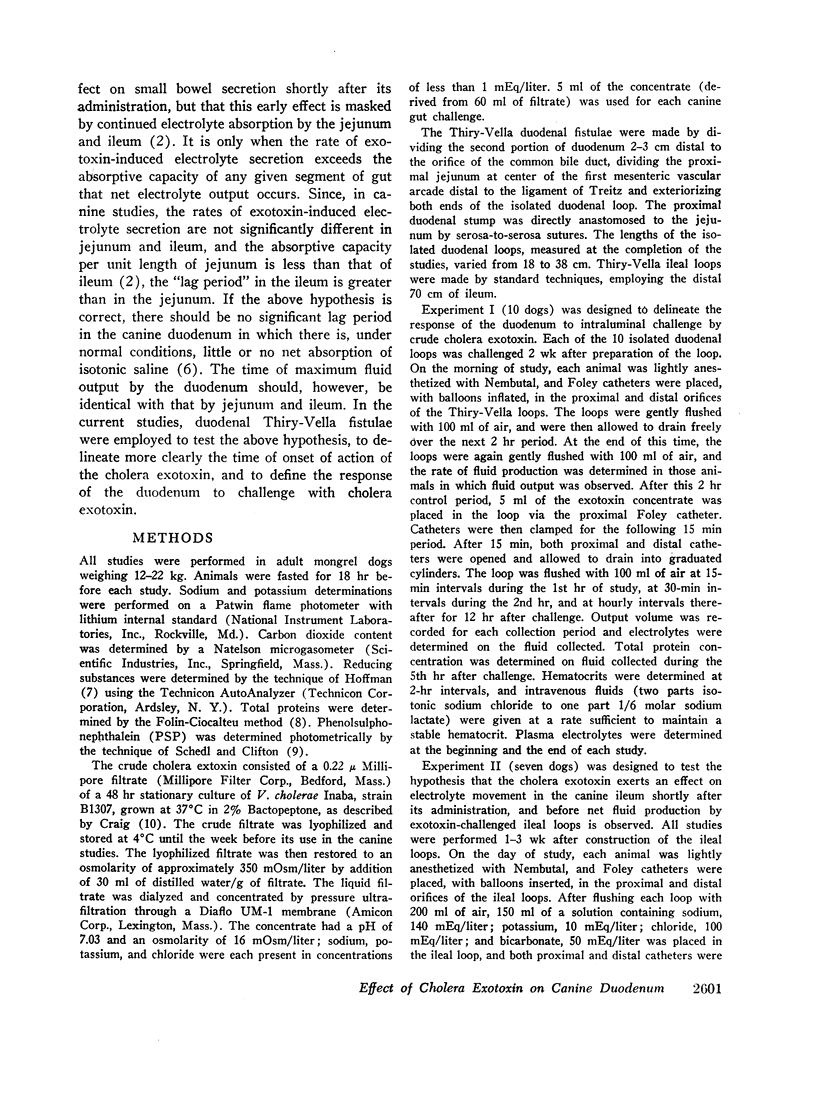
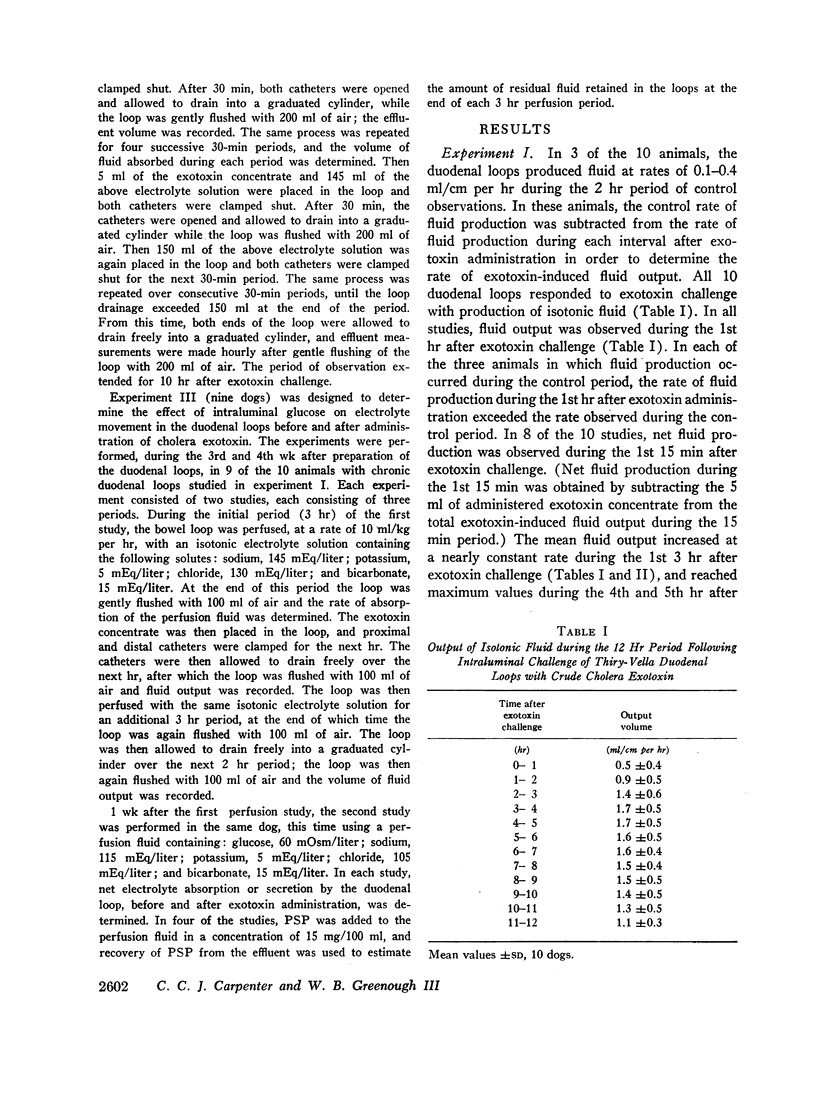
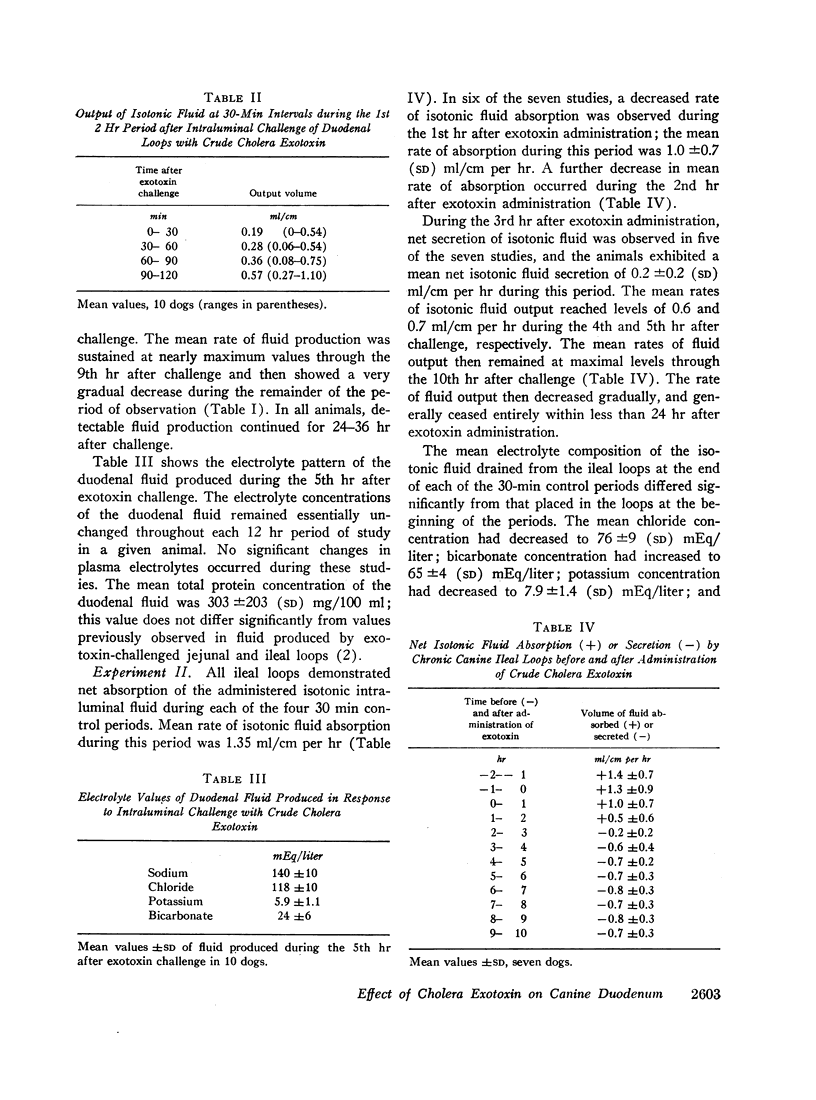
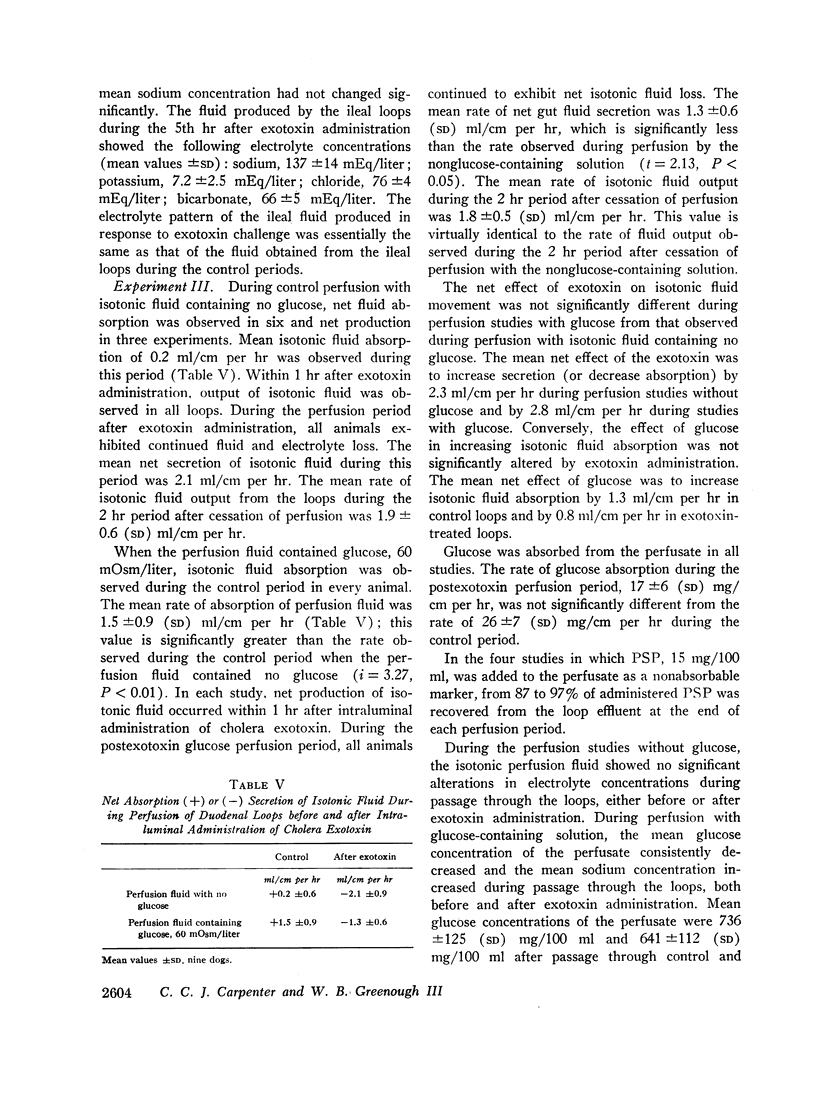
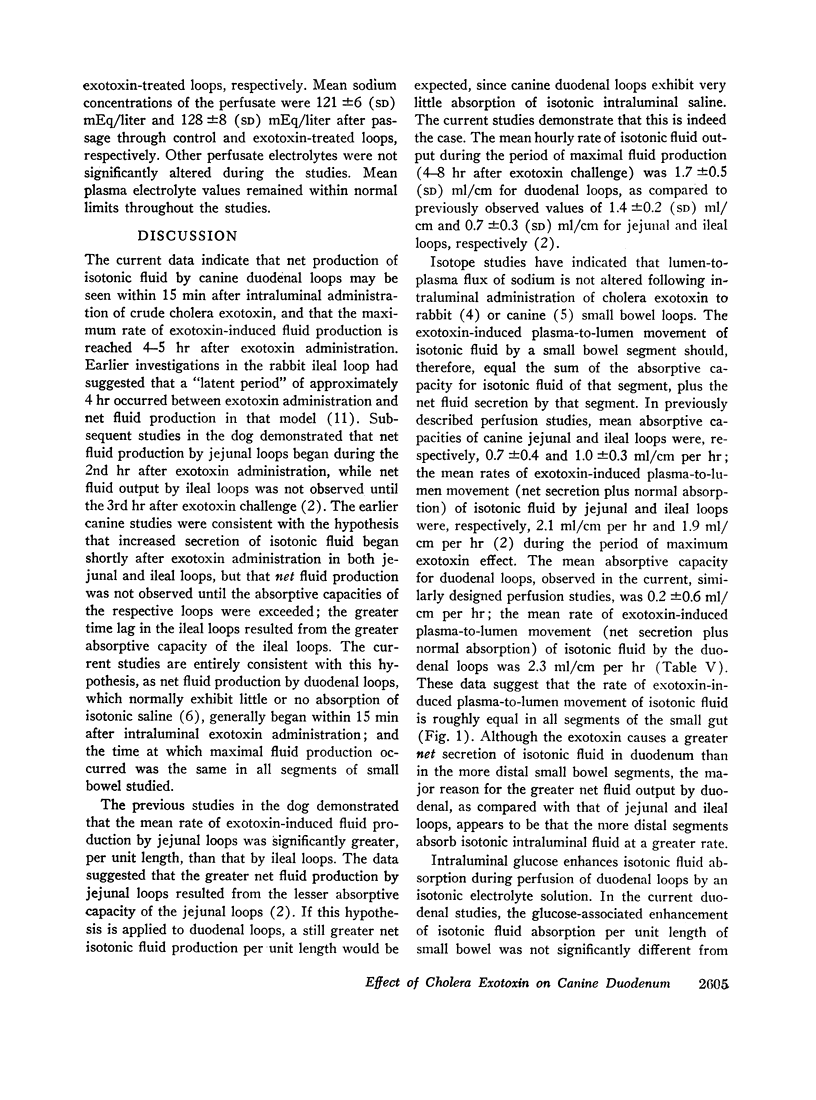
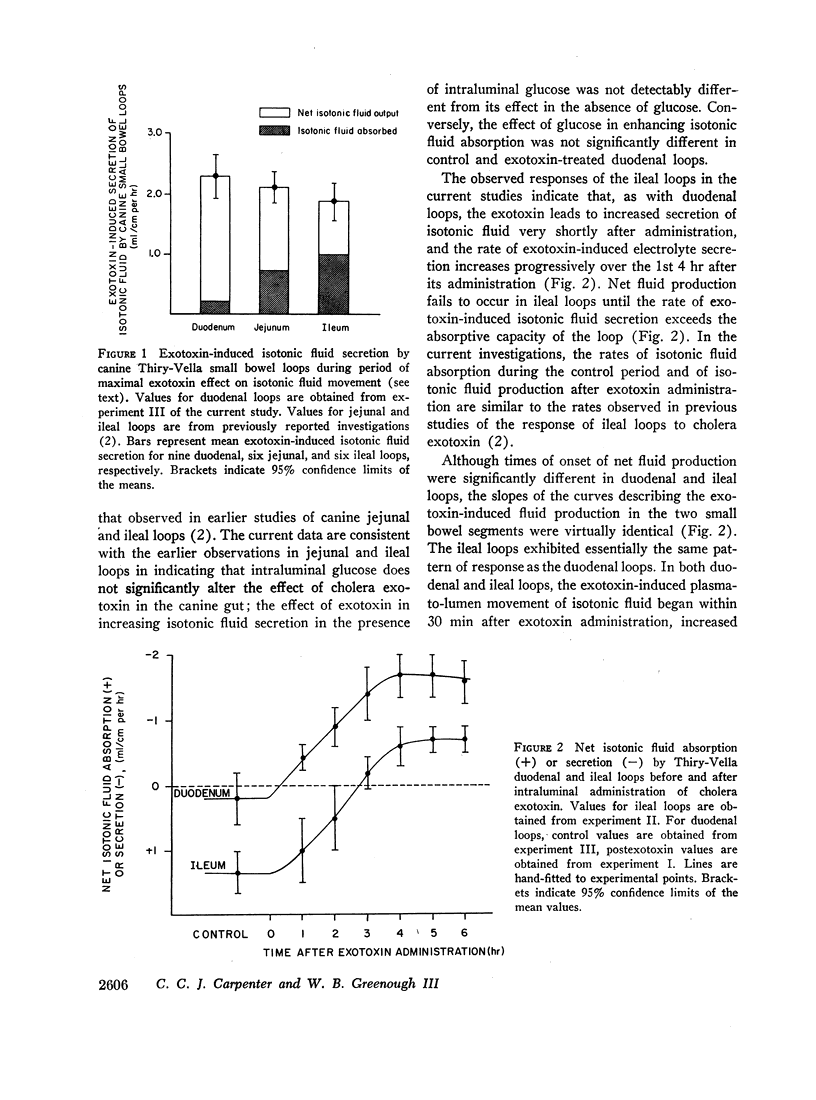
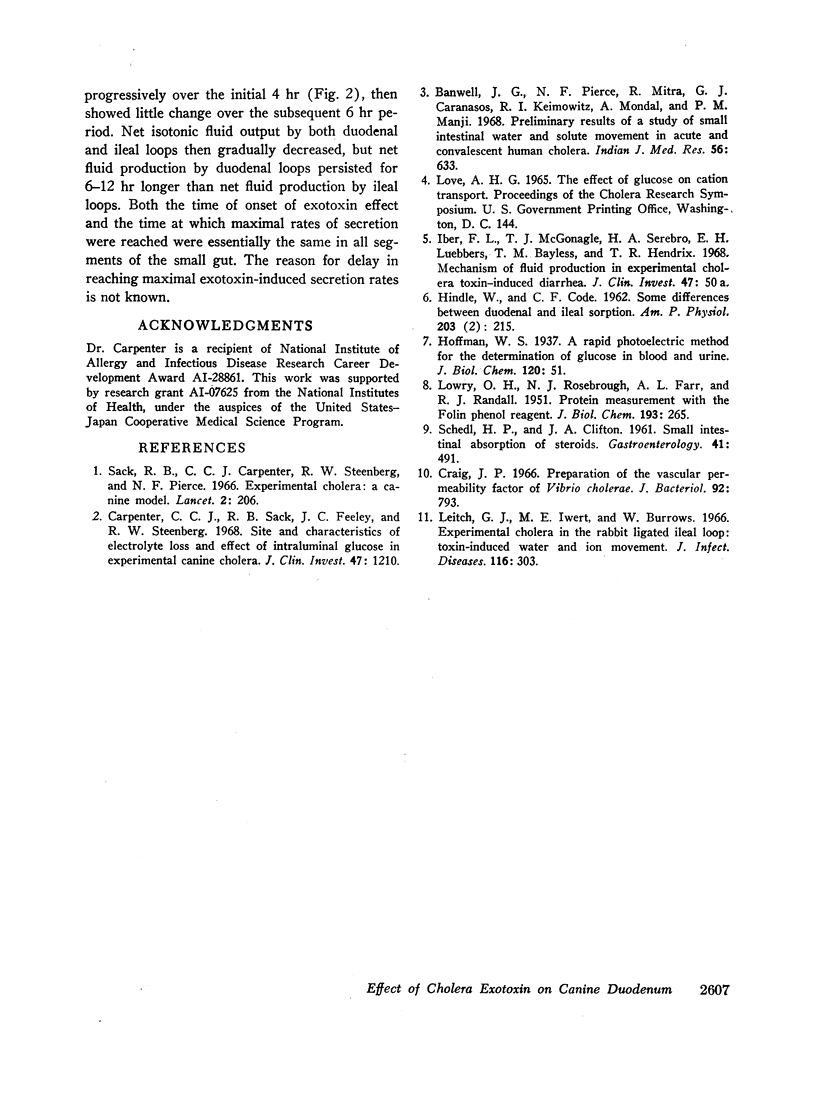
Selected References
These references are in PubMed. This may not be the complete list of references from this article.
- Banwell J. G., Pierce N. F., Mitra R., Caranasos G. J., Keimowitz R. I., Mondal A., Manji P. M. Preliminary results of a study of small intestinal water and solute movement in acute and convalescent human cholera. Indian J Med Res. 1968 May;56(5):633–639. [PubMed] [Google Scholar]
- Carpenter C. C., Sack R. B., Feeley J. C., Steenberg R. W. Site and characteristics of electrolyte loss and effect of intraluminal glucose in experimental canine cholera. J Clin Invest. 1968 May;47(5):1210–1220. doi: 10.1172/JCI105810. [DOI] [PMC free article] [PubMed] [Google Scholar]
- Craig J. P. Preparation of the vascular permeability factor of Vibrio cholerae. J Bacteriol. 1966 Sep;92(3):793–795. doi: 10.1128/jb.92.3.793-795.1966. [DOI] [PMC free article] [PubMed] [Google Scholar]
- HINDLE W., CODE C. F. Some differences between duodenal and ileal sorption. Am J Physiol. 1962 Aug;203:215–220. doi: 10.1152/ajplegacy.1962.203.2.215. [DOI] [PubMed] [Google Scholar]
- LOWRY O. H., ROSEBROUGH N. J., FARR A. L., RANDALL R. J. Protein measurement with the Folin phenol reagent. J Biol Chem. 1951 Nov;193(1):265–275. [PubMed] [Google Scholar]
- Leitch G. J., Iwert M. E., Burrows W. Experimental cholera in the rabbit ligated ileal loop: toxin-induced water and ion movement. J Infect Dis. 1966 Jun;116(3):303–312. doi: 10.1093/infdis/116.3.303. [DOI] [PubMed] [Google Scholar]
- SCHEDL H. P., CLIFTON J. A. Small intestinal absorption of steroids. Gastroenterology. 1961 Nov;41:491–499. [PubMed] [Google Scholar]
- Sack R. B., Carpenter C. C., Steenburg R. W., Pierce N. F. Experimental cholera. A canine model. Lancet. 1966 Jul 23;2(7456):206–207. doi: 10.1016/s0140-6736(66)92484-6. [DOI] [PubMed] [Google Scholar]


